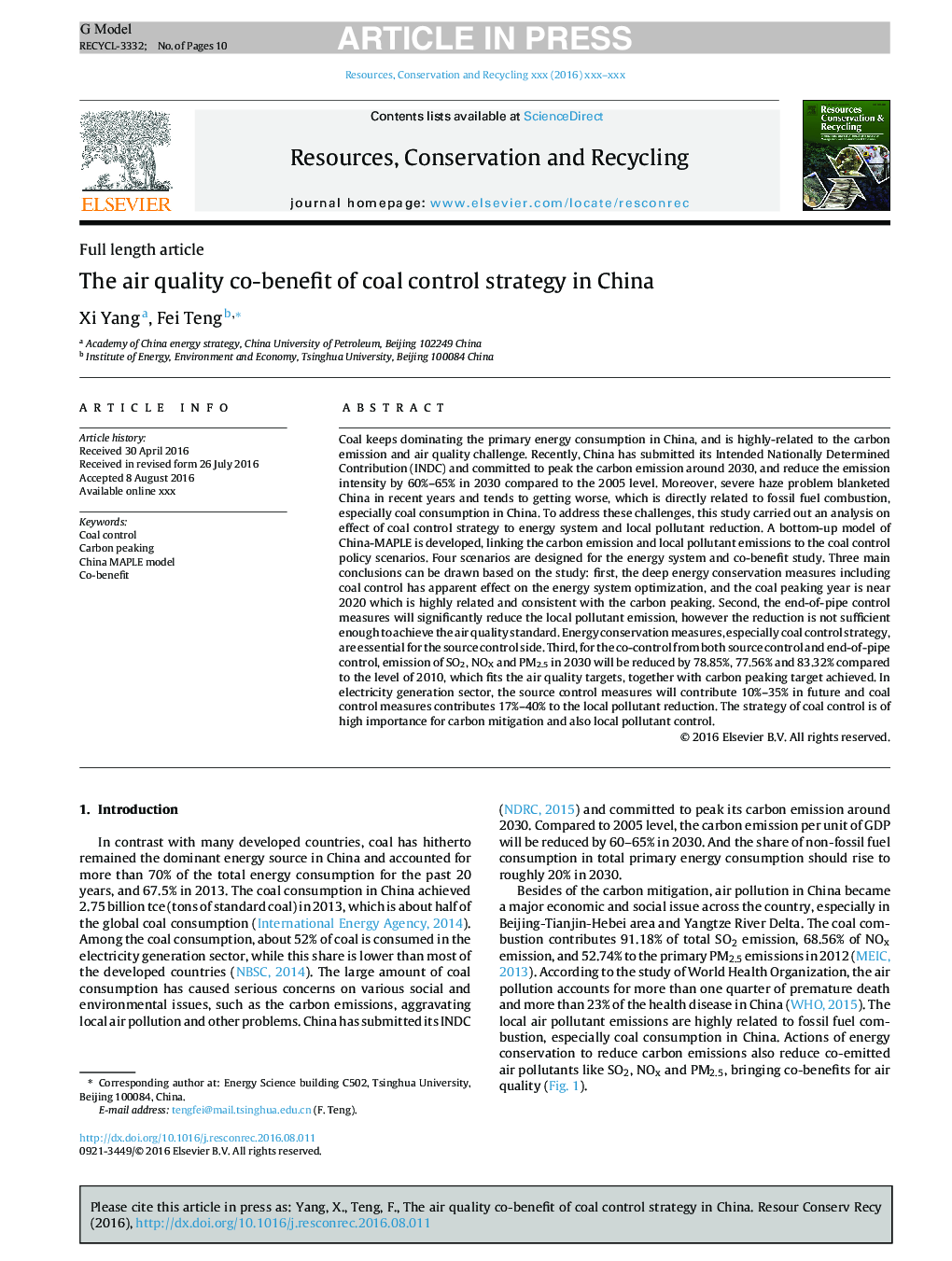| کد مقاله | کد نشریه | سال انتشار | مقاله انگلیسی | نسخه تمام متن |
|---|---|---|---|---|
| 7494618 | 1485663 | 2018 | 10 صفحه PDF | دانلود رایگان |
عنوان انگلیسی مقاله ISI
The air quality co-benefit of coal control strategy in China
ترجمه فارسی عنوان
کیفیت هوا از استراتژی کنترل زغال سنگ در چین است
دانلود مقاله + سفارش ترجمه
دانلود مقاله ISI انگلیسی
رایگان برای ایرانیان
کلمات کلیدی
موضوعات مرتبط
مهندسی و علوم پایه
مهندسی انرژی
انرژی های تجدید پذیر، توسعه پایدار و محیط زیست
چکیده انگلیسی
Coal keeps dominating the primary energy consumption in China, and is highly-related to the carbon emission and air quality challenge. Recently, China has submitted its Intended Nationally Determined Contribution (INDC) and committed to peak the carbon emission around 2030, and reduce the emission intensity by 60%-65% in 2030 compared to the 2005 level. Moreover, severe haze problem blanketed China in recent years and tends to getting worse, which is directly related to fossil fuel combustion, especially coal consumption in China. To address these challenges, this study carried out an analysis on effect of coal control strategy to energy system and local pollutant reduction. A bottom-up model of China-MAPLE is developed, linking the carbon emission and local pollutant emissions to the coal control policy scenarios. Four scenarios are designed for the energy system and co-benefit study. Three main conclusions can be drawn based on the study: first, the deep energy conservation measures including coal control has apparent effect on the energy system optimization, and the coal peaking year is near 2020 which is highly related and consistent with the carbon peaking. Second, the end-of-pipe control measures will significantly reduce the local pollutant emission, however the reduction is not sufficient enough to achieve the air quality standard. Energy conservation measures, especially coal control strategy, are essential for the source control side. Third, for the co-control from both source control and end-of-pipe control, emission of SO2, NOX and PM2.5 in 2030 will be reduced by 78.85%, 77.56% and 83.32% compared to the level of 2010, which fits the air quality targets, together with carbon peaking target achieved. In electricity generation sector, the source control measures will contribute 10%-35% in future and coal control measures contributes 17%-40% to the local pollutant reduction. The strategy of coal control is of high importance for carbon mitigation and also local pollutant control.
ناشر
Database: Elsevier - ScienceDirect (ساینس دایرکت)
Journal: Resources, Conservation and Recycling - Volume 129, February 2018, Pages 373-382
Journal: Resources, Conservation and Recycling - Volume 129, February 2018, Pages 373-382
نویسندگان
Xi Yang, Fei Teng,
